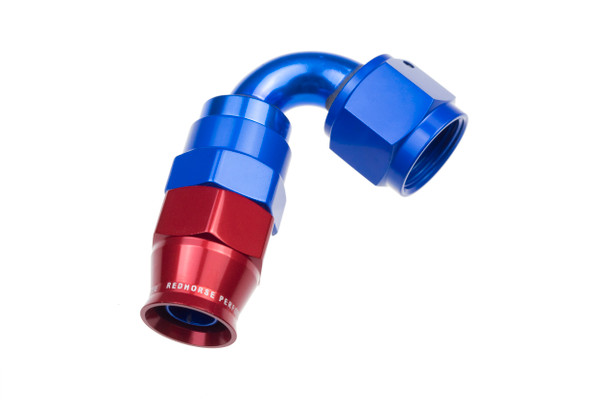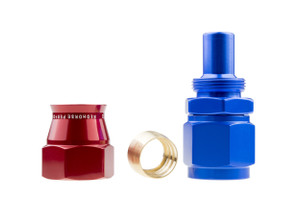Choosing the Right Hose End for Your Application
Jul 31st 2025
Selecting the appropriate hose end fittings is crucial for creating reliable, leak-free connections in any fluid system. Whether you're working with hydraulic systems, automotive fuel lines, or industrial applications, the right hose end can mean the difference between optimal performance and costly failures. Understanding the various types of hose ends available and their specific applications ensures you choose components that will deliver long-lasting, dependable service.
Types of Hose Ends
Crimped Hose Ends
Crimped hose ends represent the gold standard for permanent, high-strength connections in demanding applications. These fittings require specialized crimping equipment to compress the fitting around the hose, creating a mechanical bond that often exceeds the burst strength of the hose itself. The crimping process deforms the fitting's outer sleeve, forcing it to grip the hose with tremendous force while maintaining the integrity of the internal seal.

Reusable Hose Ends
Reusable hose ends offer the flexibility to assemble and disassemble connections without specialized tools, making them popular for applications requiring frequent maintenance or system modifications. These fittings typically use a threaded collar or similar mechanism to compress sealing elements against the hose, creating a reliable connection that can be removed and reinstalled as needed.
Push-Lock Hose Ends
Push lock hose technology represents one of the most user-friendly approaches to hose connections, requiring no tools for assembly. These fittings feature barbed or ridged surfaces that grip the inside of compatible hoses when pushed into position. The hose material deforms around the barbs, creating a mechanical lock that resists separation under normal operating pressures.
Swivel Hose Ends
Swivel hose ends incorporate rotating connections that allow the hose to turn freely without transmitting torque to the fitting or connected component. This freedom of movement reduces stress on the hose and prevents kinking or twisting that could restrict flow or cause premature failure. The swivel mechanism typically uses precision bearings or sealing surfaces to maintain leak-tight performance while allowing rotation.
AN (Army-Navy) Hose Ends
AN hose ends represent the pinnacle of precision-engineered connections, originally developed for military aircraft applications where failure simply wasn't acceptable. These fittings use standardized thread pitches and sealing methods to create incredibly reliable connections that perform consistently across a wide range of conditions.
Factors to Consider When Choosing a Hose End
Hose Type and Material Compatibility
The relationship between hose material and fitting design is critical for achieving reliable connections. Different hose materials have varying characteristics in terms of flexibility, chemical resistance, and thermal expansion, all of which affect fitting compatibility. Performance hose materials like a PTFE fuel hose require specific fitting designs to accommodate their unique properties.

Operating Pressure and Temperature
Pressure rating represents one of the most critical factors in hose end selection. Each fitting type has specific pressure limitations that must not be exceeded to ensure safe operation. High pressure applications require fittings specifically designed and tested for those conditions, with appropriate safety factors built into the design.
Temperature considerations are equally important, as extreme temperatures can affect both the fitting materials and the sealing mechanisms. Brass fittings may soften at high temperatures, while plastic fittings may become brittle in cold conditions. Stainless steel fittings generally offer the best temperature performance but at higher cost.
Fluid Type
The chemical compatibility between the hydraulic fluid and fitting materials is crucial for long-term reliability. Aggressive chemicals can attack fitting materials, seals, and even the hose itself, leading to premature failure or contamination of the fluid system. Understanding the specific fluid requirements helps narrow the fitting choices to compatible materials.
Hydraulic fluid compatibility extends beyond the fitting body to include all sealing elements and any internal components that contact the fluid. O-rings, gaskets, and other sealing components must be selected for chemical compatibility with the specific fluid being used.
Installation Environment
The installation environment significantly impacts fitting selection, particularly regarding corrosion resistance and mechanical protection. Marine applications require fittings capable of withstanding salt spray and high humidity, typically favoring stainless steel or specially coated materials.
Industrial environments may expose fittings to chemicals, abrasion, or mechanical damage that requires specific protection measures. Protective covers, coating systems, or upgraded materials may be necessary to ensure reliable long-term performance in harsh environments.
Temperature extremes in the installation environment can affect fitting performance even when the fluid temperatures remain moderate. Solar heating, proximity to heat sources, or exposure to freezing conditions all influence material selection and installation practices.
Common Applications and Recommended Hose Ends
Automotive Applications
Automotive applications encompass a wide range of fluid systems, each with specific requirements for hose end selection. Fuel systems require fittings compatible with modern fuel formulations and capable of handling both pressure and vacuum conditions. PTFE hose ends are often preferred for fuel applications due to their excellent chemical resistance and temperature stability.
Hydraulic systems in automotive applications, such as power steering and brake systems, require high-pressure-rated fittings capable of handling the extreme pressures generated by these systems. The compact nature of automotive installations often requires specialized fitting configurations to achieve proper routing in tight spaces.
Industrial Applications
Industrial hydraulic systems represent some of the most demanding applications for hose end fittings. These systems often operate at pressures exceeding 5,000 PSI with hydraulic fluid temperatures that can reach extreme levels. The combination of high pressure, temperature, and continuous operation requires the most robust fitting designs available.
Industrial hoses used in manufacturing equipment must withstand not only the fluid conditions but also the mechanical stresses of continuous operation. Vibration, movement, and occasional impact loading require fittings designed for durability and long service life.
Marine Applications
Marine environments present unique challenges for hose end selection due to the corrosive nature of salt water and the demanding operating conditions. Stainless steel fittings are typically preferred for their corrosion resistance, though proper grade selection is crucial for optimal performance in marine environments.
The combination of moisture, salt, and temperature cycling creates an aggressive environment that can quickly degrade inferior fittings. Investment in quality marine-grade fittings pays dividends in reduced maintenance and improved reliability.
Installation Tips and Best Practices
Proper installation techniques are crucial for achieving optimal performance from any hose end fitting. Begin by ensuring the hose is cut cleanly and squarely, as ragged or angled cuts can prevent proper sealing and may cause premature failure. Use sharp, appropriate cutting tools to achieve clean cuts without damaging the hose structure.
Follow manufacturer specifications exactly when assembling fittings, paying particular attention to insertion depths and torque specifications. Over-tightening can damage sealing surfaces or distort components, while under-tightening may result in leaks or connection failures. Use proper tools and torque measuring devices when specified.
Conclusion
Selecting the right hose end for your application requires careful consideration of multiple factors including pressure requirements, hose material compatibility, operating environment, and installation constraints. The investment in proper fitting selection pays dividends through improved reliability, reduced maintenance, and enhanced system performance.
Whether you're working with high-pressure hydraulic systems, delicate fuel delivery applications, or challenging marine environments, understanding the characteristics and capabilities of different hose end types enables informed decisions that protect your investment and ensure reliable operation.
